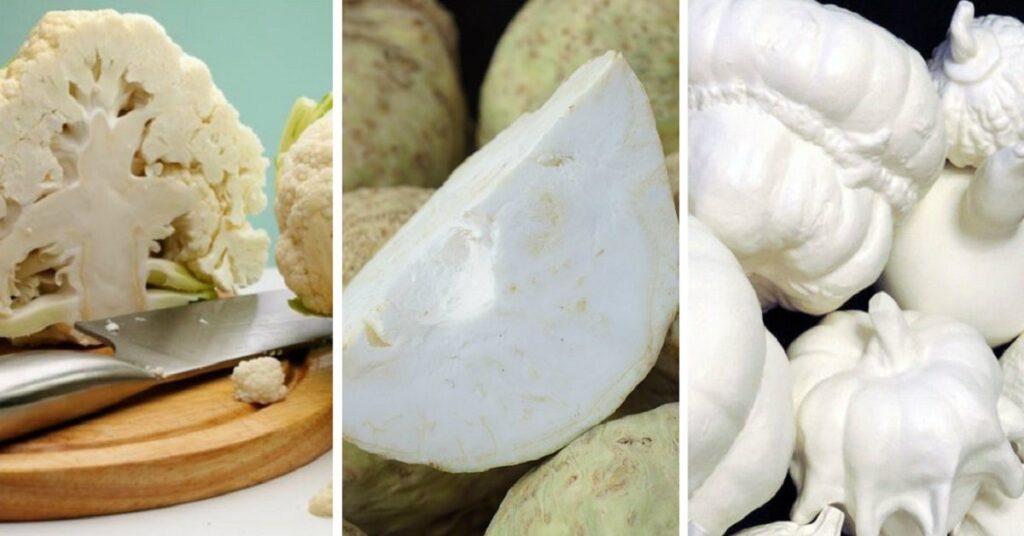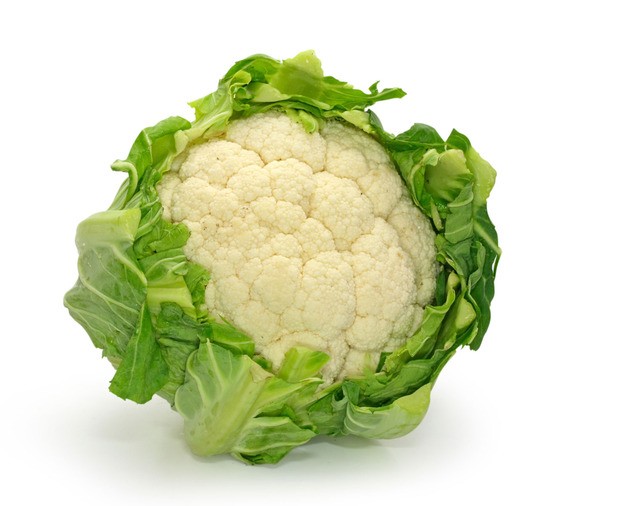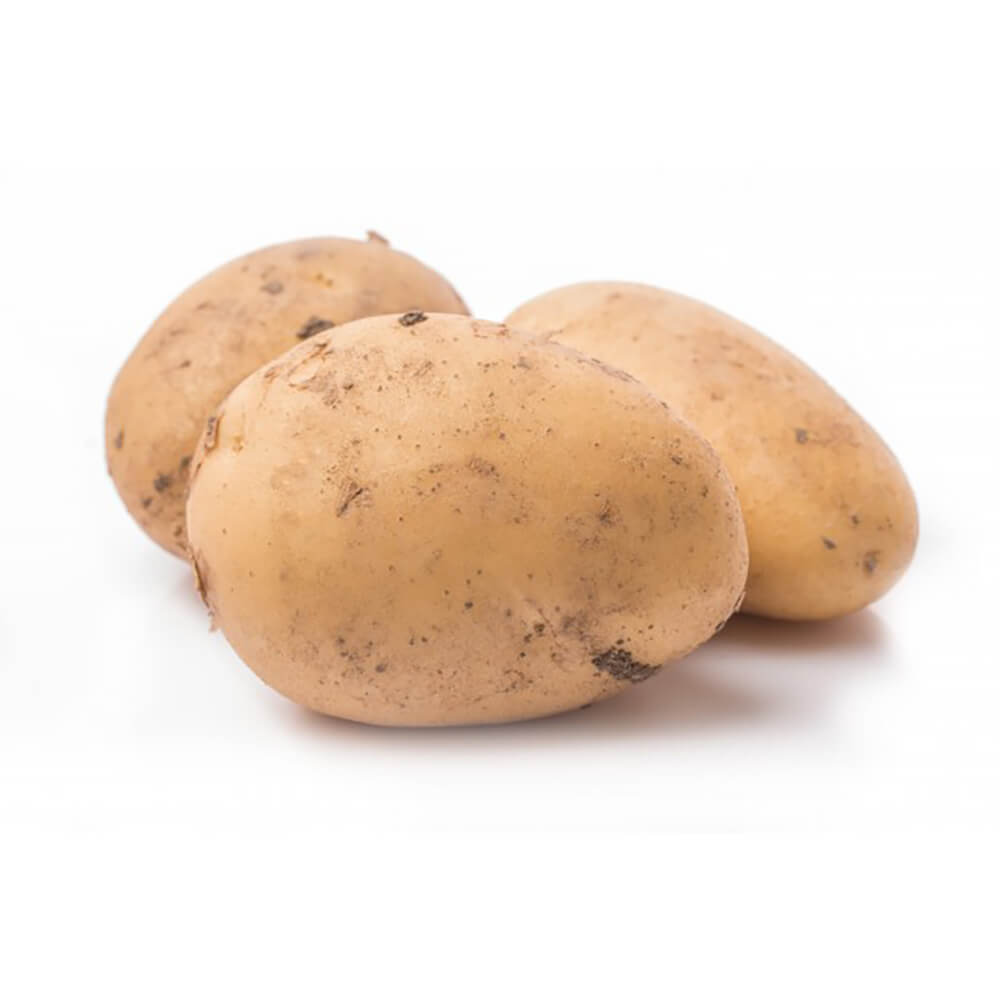
White vegetables improve the condition of the body
White vegetables play a significant role in improving the condition of the body. While they may not be as visually striking as their colorful counterparts, their nutritional value is not to be underestimated. Here are some ways in which white vegetables can contribute to better overall health:
Antioxidant Power: Many white vegetables, such as cauliflower and turnips, contain antioxidants that help protect the body against oxidative stress. These antioxidants neutralize harmful free radicals, reducing the risk of chronic diseases and promoting cellular health.
Enhanced Immunity: White vegetables, including onions and garlic, possess immune-boosting properties. They are rich in compounds like allicin, which has antimicrobial and antiviral effects, helping to strengthen the immune system and protect against infections.
Heart Health: Several white vegetables, like potatoes, are good sources of potassium. Potassium helps regulate blood pressure and maintain a healthy cardiovascular system. By incorporating white vegetables into your diet, you can support heart health and reduce the risk of heart disease.
Digestive Health: White vegetables are often high in dietary fiber, which aids digestion and promotes a healthy gut. Fiber adds bulk to the stool, facilitating regular bowel movements and preventing constipation. It also supports the growth of beneficial gut bacteria, which contribute to optimal digestive function.
Bone Strength: Certain white vegetables, including turnips and cauliflower, provide essential minerals like calcium and vitamin K. These nutrients play a crucial role in maintaining strong bones and preventing conditions such as osteoporosis.
Weight Management: White vegetables are generally low in calories and high in fiber, making them ideal for weight management. They provide satiety, helping to control hunger and reduce overall calorie intake. Incorporating white vegetables into a balanced diet can support healthy weight maintenance.
Incorporating a variety of white vegetables into your meals can significantly improve the condition of your body. Their nutritional value, coupled with their potential health benefits, makes them an excellent addition to any balanced diet. Embrace the power of white vegetables and witness the positive impact they have on your overall well-being.

White vegetables for strong immunity
White vegetables are excellent choices for boosting and maintaining a strong immune system. While their color may be subtle, their immune-boosting properties are anything but. Here’s why white vegetables are beneficial for enhancing immunity:
Antioxidant-rich: White vegetables like cauliflower and onions are packed with antioxidants such as allicin and quercetin. These antioxidants help combat oxidative stress and reduce inflammation in the body, thereby strengthening the immune system.
Allicin’s Immune Benefits: Garlic and onions contain allicin, a compound known for its immune-boosting properties. Allicin has antimicrobial and antiviral effects, helping to fend off harmful pathogens and infections.
Vitamin C Power: Some white vegetables, like cauliflower and turnips, are rich sources of vitamin C. This vital nutrient is known to enhance immune function, stimulate the production of white blood cells, and support the body’s ability to fight off infections.
Fiber for Gut Health: White vegetables, including leeks and celery, are often high in fiber. A healthy gut plays a significant role in immune health, as it houses a significant portion of the body’s immune cells. Fiber promotes the growth of beneficial gut bacteria, which supports a robust immune response.
Potassium and Immune Function: Potatoes, another white vegetable, contain potassium, a mineral essential for immune function. Potassium helps maintain proper cell function and enables efficient communication between immune cells, contributing to a stronger immune system.
By incorporating a variety of white vegetables into your diet, you can provide your body with immune-boosting nutrients, antioxidants, and fiber. These components work synergistically to support your immune system’s resilience and defense against infections. Embrace the power of white vegetables as a delicious and nutritious way to strengthen your immunity and promote overall well-being.

Cauliflower is a versatile and nutritious vegetable that belongs to the Brassica family, along with broccoli, cabbage, and kale. Known for its dense, compact florets, cauliflower offers an array of health benefits and culinary possibilities. Let’s delve into the composition, caloric value, medicinal properties, consumption methods, and a delicious recipe to prepare cauliflower.
Composition and Caloric Value: Cauliflower is a low-calorie vegetable that is rich in essential nutrients. It is an excellent source of vitamin C, vitamin K, folate, and dietary fiber. It also contains smaller amounts of vitamins B6 and B5, potassium, manganese, and phosphorus. With only about 25 calories per 100 grams, cauliflower is a nutrient-dense choice for a healthy diet.
Medicinal Properties and Health Benefits: Cauliflower is renowned for its numerous health benefits. It contains potent antioxidants, including vitamin C and various phytochemicals, that help reduce inflammation and protect against chronic diseases. The sulforaphane compound found in cauliflower has been associated with potential anti-cancer properties. Additionally, the fiber content supports digestion, while the high water content promotes hydration and aids in weight management.
Methods of Consumption: Cauliflower can be enjoyed in a variety of ways. It can be eaten raw as a crunchy snack, steamed, boiled, roasted, or even mashed. It has a mild, slightly sweet flavor that pairs well with a wide range of seasonings and ingredients.
Recipe: Roasted Garlic Cauliflower Ingredients:
- 1 medium-sized cauliflower head
- 3 cloves of garlic, minced
- 2 tablespoons olive oil
- Salt and pepper to taste
- Fresh parsley (optional, for garnish)
Instructions:
- Preheat the oven to 425°F (220°C) and line a baking sheet with parchment paper.
- Cut the cauliflower into florets and place them on the prepared baking sheet.
- In a small bowl, combine the minced garlic, olive oil, salt, and pepper. Drizzle this mixture over the cauliflower florets, ensuring they are evenly coated.
- Roast the cauliflower in the preheated oven for about 20-25 minutes, or until they are golden brown and tender when pierced with a fork.
- Once roasted, remove from the oven and garnish with fresh parsley if desired.
- Serve the roasted garlic cauliflower as a side dish or incorporate it into salads, grain bowls, or stir-fries for added flavor and texture.
Enjoy the delicious and nutritious roasted garlic cauliflower as a wholesome addition to your meals!
Note: Feel free to experiment with additional seasonings and spices, such as paprika, cumin, or lemon zest, to customize the flavor according to your preferences.
Cauliflower’s versatility and health benefits make it a wonderful addition to any diet. Whether roasted, steamed, or used as a low-carb alternative in recipes like cauliflower rice or pizza crust, this nutritious vegetable can elevate your culinary experiences while nourishing your body with essential nutrients.

Potatoes are a beloved and versatile vegetable that is enjoyed worldwide. With their rich composition, nutritional value, and culinary flexibility, potatoes have become a staple in many cuisines. Let’s explore the composition, caloric value, potential health benefits, different methods of consumption, and a tasty recipe to prepare potatoes.
Composition and Caloric Value: Potatoes are primarily composed of carbohydrates, mainly in the form of starch. They also contain dietary fiber, vitamins C and B6, potassium, and small amounts of other essential minerals. The caloric value of potatoes varies depending on the cooking method and type of potato but generally ranges from 77-130 calories per 100 grams.
Potential Health Benefits: While often associated with comfort foods, potatoes offer several health benefits. They are a good source of vitamin C, which supports the immune system, and vitamin B6, which plays a role in brain development and function. The dietary fiber in potatoes aids digestion and promotes feelings of fullness, which can assist in weight management. Additionally, potatoes provide potassium, which is important for maintaining proper heart and muscle function.
Methods of Consumption: Potatoes can be enjoyed in various ways, offering versatility in the kitchen. They can be boiled, roasted, mashed, fried, or even used in soups, stews, and casseroles. From creamy mashed potatoes to crispy French fries, the possibilities are endless.
Recipe: Roasted Garlic Parmesan Potatoes Ingredients:
- 4 medium-sized potatoes, washed and cut into wedges
- 4 cloves of garlic, minced
- 2 tablespoons olive oil
- 1/4 cup grated Parmesan cheese
- 1 teaspoon dried rosemary
- Salt and pepper to taste
Instructions:
- Preheat the oven to 425°F (220°C) and line a baking sheet with parchment paper.
- In a large bowl, combine the potato wedges, minced garlic, olive oil, Parmesan cheese, dried rosemary, salt, and pepper. Toss until the potatoes are evenly coated.
- Arrange the coated potato wedges in a single layer on the prepared baking sheet.
- Roast in the preheated oven for about 30-35 minutes or until the potatoes are golden brown and crispy.
- Remove from the oven and let them cool slightly before serving.
Enjoy these delicious roasted garlic Parmesan potatoes as a flavorful side dish or even as a satisfying snack!
Note: Feel free to experiment with different seasonings and herbs, such as paprika, thyme, or Italian seasoning, to customize the flavor according to your preferences.
Potatoes are a versatile and nutritious vegetable that can be incorporated into a wide range of dishes. From comforting mashed potatoes to crispy roasted potatoes, they add a delightful element to any meal. Remember to enjoy potatoes as part of a balanced diet, incorporating other vegetables, proteins, and healthy fats for optimal nutrition.

Turnips are a root vegetable that is known for its crisp texture, unique flavor, and impressive nutritional profile. From their composition and caloric value to their potential health benefits and various culinary applications, turnips offer a delightful addition to a well-rounded diet. Let’s explore everything you need to know about turnips, including their composition, potential health benefits, methods of consumption, and a delicious recipe to prepare them.
Composition and Caloric Value: Turnips are low in calories and packed with essential nutrients. They are an excellent source of dietary fiber, vitamin C, potassium, and folate. They also provide small amounts of other vitamins and minerals, such as calcium, phosphorus, and magnesium. With just about 28 calories per 100 grams, turnips are a nutrient-dense choice for incorporating into your meals.
Potential Health Benefits: Turnips offer several potential health benefits due to their impressive nutritional composition. The high fiber content promotes digestion and can aid in weight management. The vitamin C content supports immune function and acts as an antioxidant, protecting against cell damage. Additionally, turnips contain glucosinolates, which have been linked to potential anti-cancer properties.
Methods of Consumption: Turnips can be enjoyed in various ways, allowing for culinary versatility. They can be eaten raw, added to salads for a refreshing crunch, or cooked through methods such as boiling, steaming, roasting, or sautéing. The mild, slightly peppery flavor of turnips complements a wide range of dishes.
Recipe: Honey-Glazed Roasted Turnips Ingredients:
- 4 medium-sized turnips, peeled and cut into wedges
- 2 tablespoons olive oil
- 2 tablespoons honey
- 1 tablespoon balsamic vinegar
- Salt and pepper to taste
- Fresh thyme leaves (optional, for garnish)
Instructions:
- Preheat the oven to 400°F (200°C) and line a baking sheet with parchment paper.
- In a bowl, combine the olive oil, honey, balsamic vinegar, salt, and pepper. Mix well to create the glaze.
- Place the turnip wedges on the prepared baking sheet and drizzle the glaze over them, ensuring they are evenly coated.
- Roast the turnips in the preheated oven for approximately 30-35 minutes or until they are golden brown and tender when pierced with a fork.
- Remove from the oven and garnish with fresh thyme leaves if desired.
- Serve the honey-glazed roasted turnips as a flavorful side dish or as a delightful addition to grain bowls or salads.
Enjoy the delicious and nutritious honey-glazed roasted turnips, showcasing the natural sweetness and earthy flavors of this versatile root vegetable.
Note: Feel free to experiment with additional seasonings or spices, such as garlic powder or paprika, to enhance the flavor according to your preferences.
Turnips offer a wonderful combination of flavor, texture, and nutritional benefits. Whether roasted, steamed, or incorporated into various recipes, they provide a delightful addition to your culinary repertoire. Embrace the versatility of turnips and enjoy their unique taste while reaping the numerous health benefits they have to offer.
